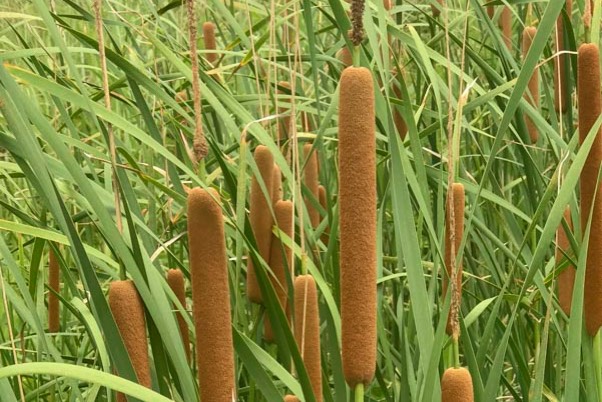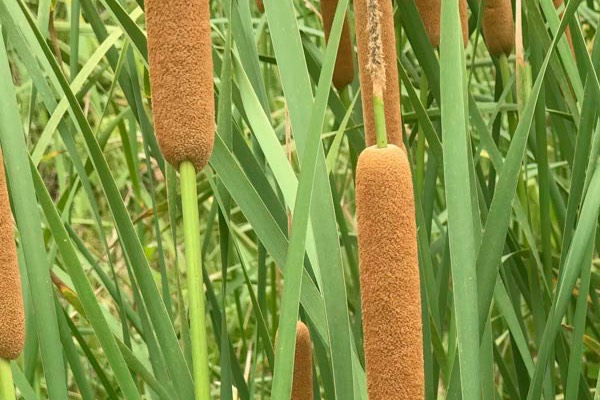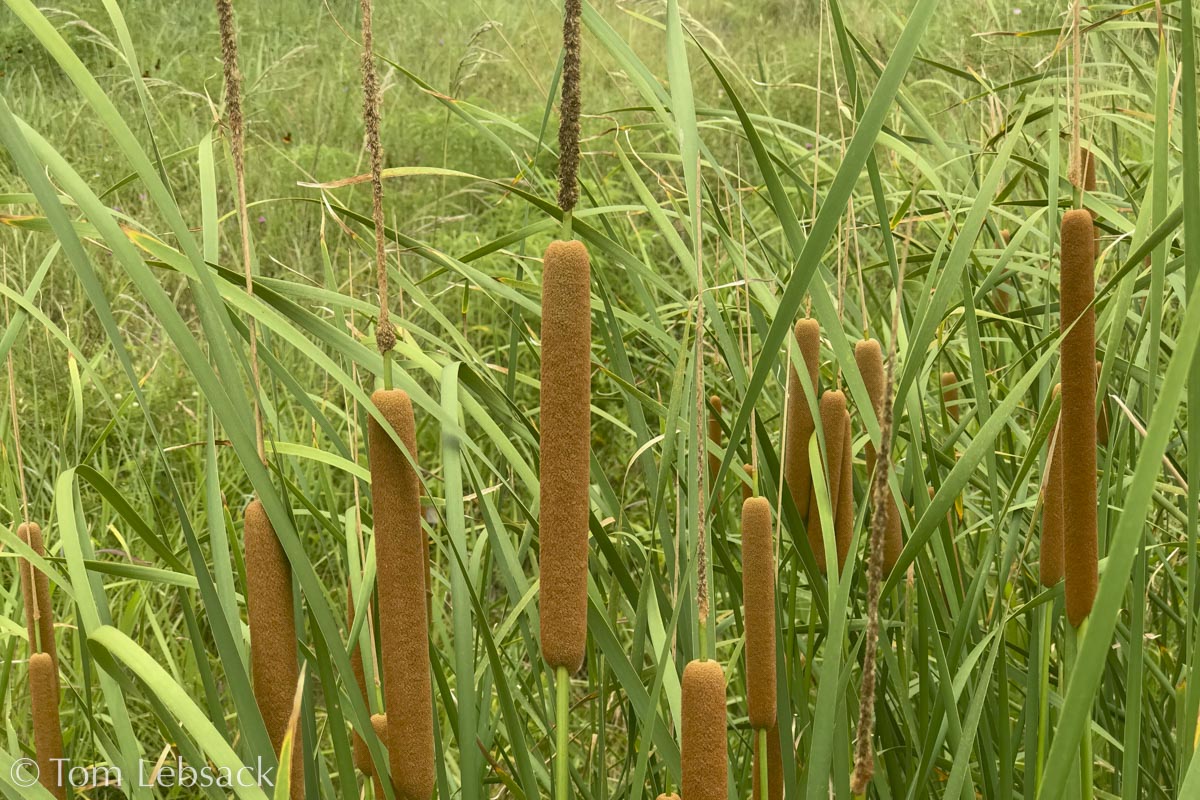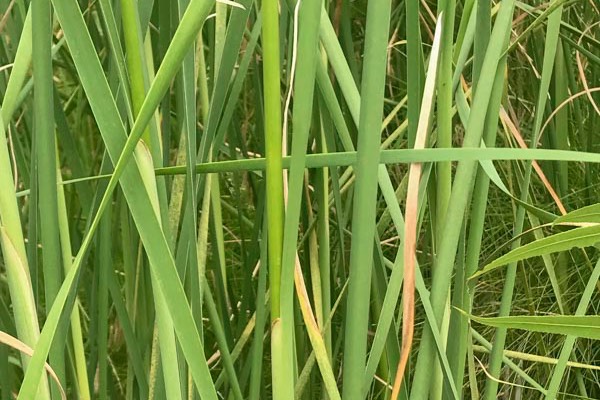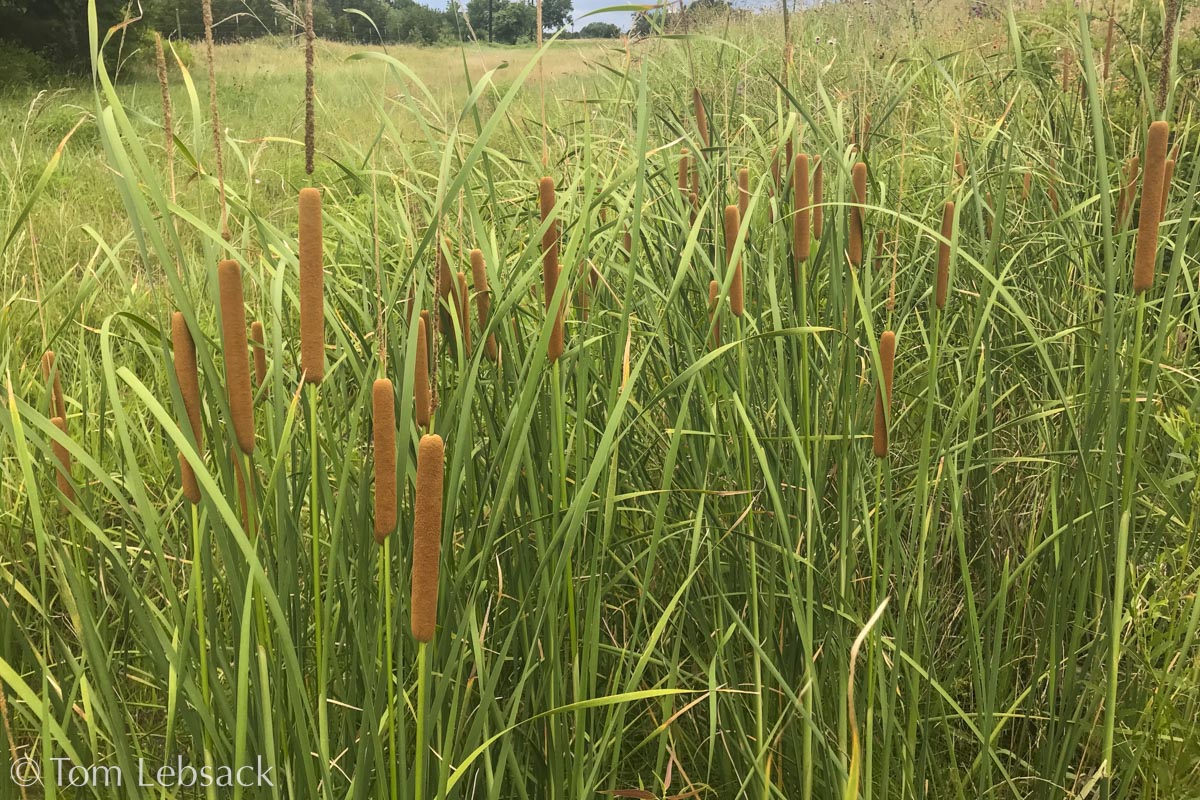Texas Wildbuds
Typha domingensis
(Southern Cattail)
| Scientific Name | Typha domingensis | USDA PLANTS Symbol | TYDO |
| Common Name | Southern Cattail | ITIS Taxonomic Serial No. | 42327 |
| Family | Typhaceae (Cattail) | SEINet Reference |
Click Here |
| Description | Habitat: Brackish to fresh marshes and streams, rivers, lakes and ponds from 1,000-6,000 ft. Plant: Colony-forming aquatic, perennial herb, 5 to 6 ft. tall (or taller) from large, creeping rhizomes; cylindrical sheath is open at the throat. Leaves: Linear basal leaves, 6 to 9 (or more), light yellowish green, and normally shorter than the inflorescence; less than 1/2 inch wide, almost flat. Inflorescence: Pistillate and staminate portions separated by 3/8 to 1-1/2 inches along the stem; staminate spikes 8 to 16 inches, flowers with golden-yellow pollen; pistillate spikes light brown, 6 to 10 inches long and 5/8 to 1 inch thick. Bloom Period: April and May. References: "Manual of the Vascular Plants of Texas" by Correll and Johnston, Texas A&M and SEINet. |
BONAP Distribution Map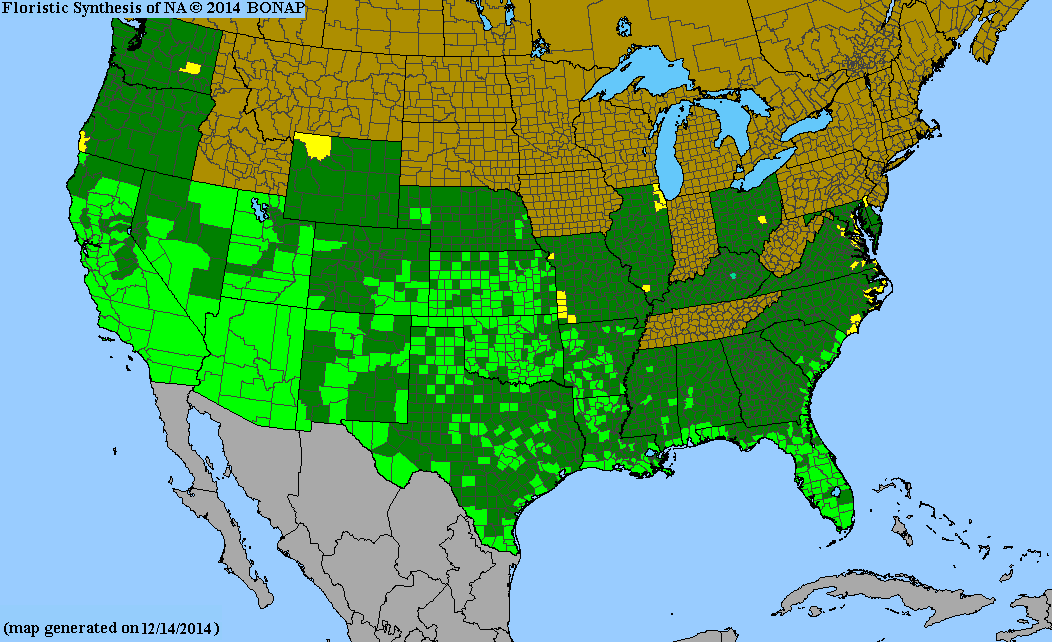 Map Color Key Map Color Key |
Texas Status: Native |
Banner photo of Castilleja indivisa and Lupinus ssp. taken along FM 1323 north of Johnson City, Blanco County
© Tom Lebsack 2025
Every attempt is made to provide accurate, up-to-date, and relevant information, but the completeness or accuracy of any information presented on this website cannot be guaranteed. I use authoritative references to insure high standards of accuracy and review and update the information frequently.
